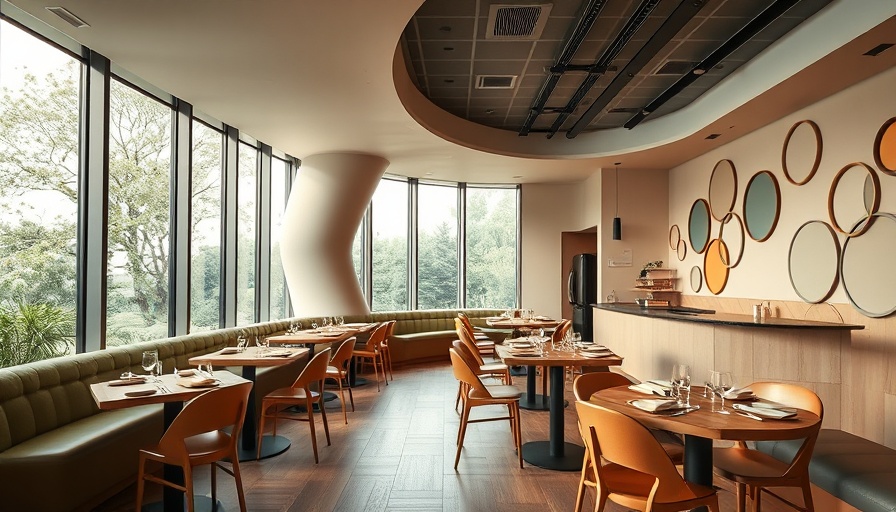
Capturing the Essence of Mexican Craft in Midtown Manhattan
In a bustling business mecca like Midtown Manhattan, finding a delightful oasis can be a challenge. Ánimo!, a new restaurant designed by Jordana Maisie Design Studio, embodies this spirit—transforming a corner at 52nd Street and 2nd Avenue into a cozy retreat infused with Mexican cultural nuances. Maisie's design philosophy draws heavily from Mexican architecture and materials, focusing especially on the rich and vibrant aspects of its breakfast culture. Through thoughtful design, Ánimo! invites not just diners, but also those seeking a brief escape from the fast-paced city life.
The Importance of Craftsmanship and Cultural Nuance
Maisie's studio achieves a profound connection to Mexican heritage by integrating handmade elements such as Fireclay Tiles and custom terrazzo counters. These choices highlight exceptional craftsmanship, elevating a dining experience to one that is both visual and tactile. As the founder says, "each piece is a testament to the beauty of craftsmanship and attention to detail." This reflects the broader trend in restaurant design where authenticity and world cultures intertwine, providing diners not just a meal, but a sensory journey.
Functionality Meets Aesthetic: Effective Remote Workspaces
For digital nomads and remote workers, Ánimo! provides an interesting case study in designing comfortable spaces that facilitate productivity. The semi-circular booths and wavy textures allow for a sense of privacy while still keeping an open and inviting atmosphere. These design elements are crucial in creating an environment that fosters creativity and comfort. The careful choice of materials, including the pistachio green leather cushions, assures that aesthetics do not compromise comfort—an essential factor for anyone working outside their usual office.
Creating a Flow: The Power of Space Dynamics
Maisie's team aimed to break away from the rigid and often overwhelming grid design of Midtown. The restaurant's layout features undulating ceilings and curved lines, which invite diners to flow freely throughout the space. This aspect of design is not merely artistic; it impacts how people experience a space. For remote workers, such an environment can promote a sense of well-being, allowing for a more relaxed mindset necessary for effective work.
Future Insights: Embracing Versatile Spaces
The intersection of dining and working spaces designs can pave the way for future restaurant concepts. As more professionals seek out diverse settings to work remotely, restaurants like Ánimo! might set a precedent for design norms that accommodate both leisure and productivity. Spaces promoting calm, sociability, and efficiency will likely cater to a growing demographic of remote workers who value adaptability. This shift could redefine urban eateries as multifunctional hubs—places where one can both dine and get tasks done with ease.
Emphasizing Connection
At its core, Ánimo! embodies the notion of connection—between individuals, to the heritage the restaurant is celebrating, and to the urban environment that envelops it. For those working remotely, this space can provide a refreshing break from traditional home or office environments. By reshaping how we view our work settings, we allow ourselves the flexibility to discover inspiration and creativity in unexpected places.
 Add Row
Add Row  Add
Add 




Write A Comment